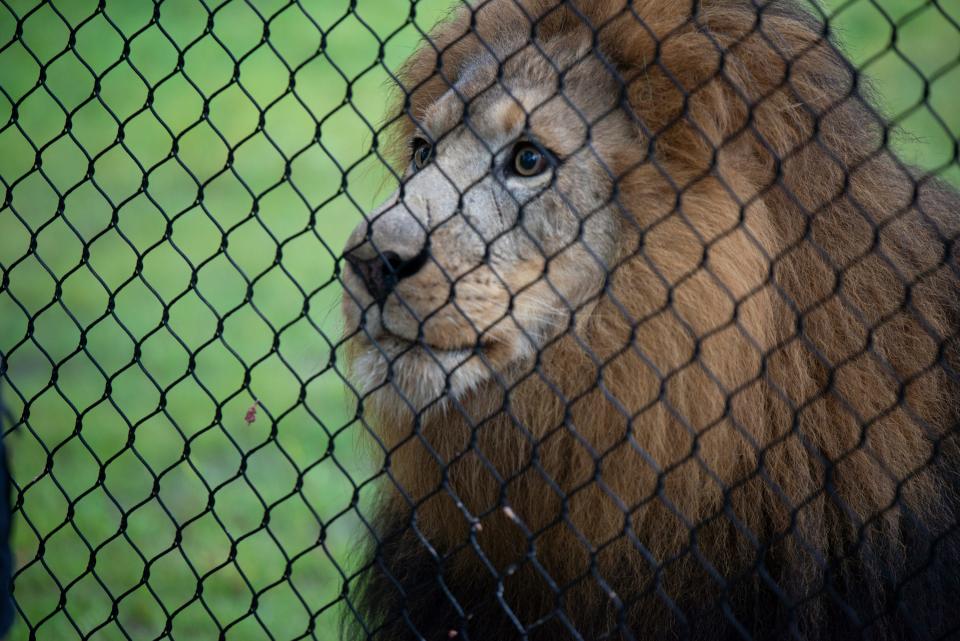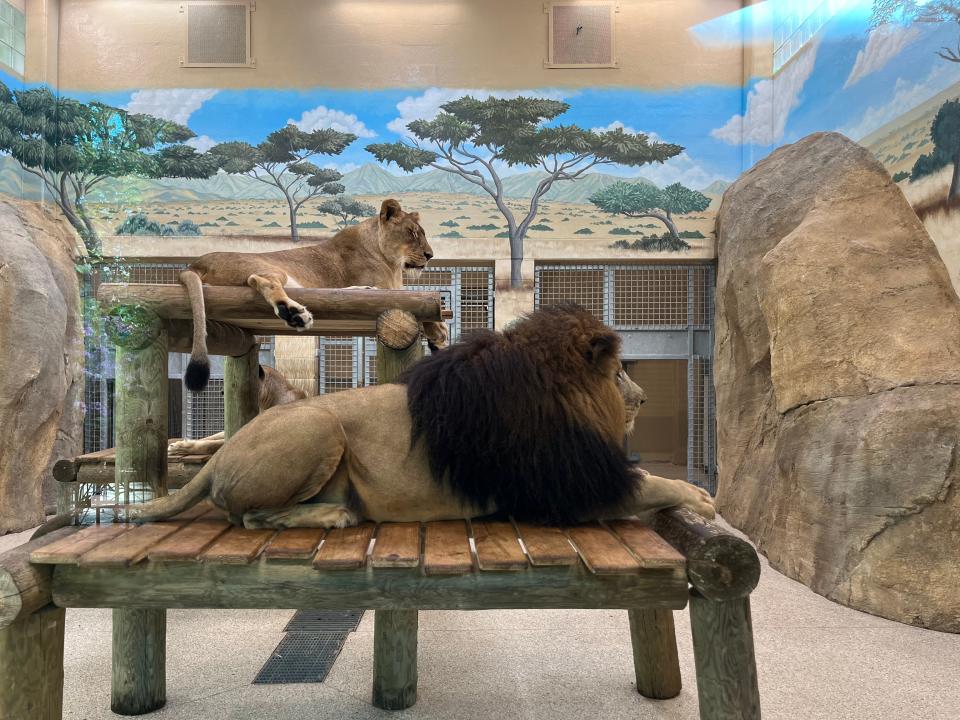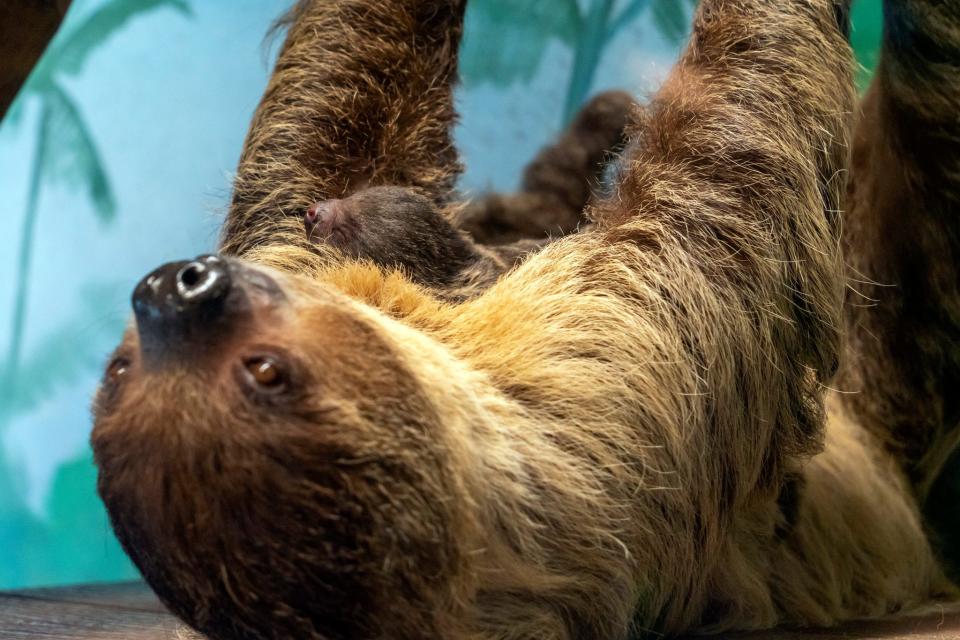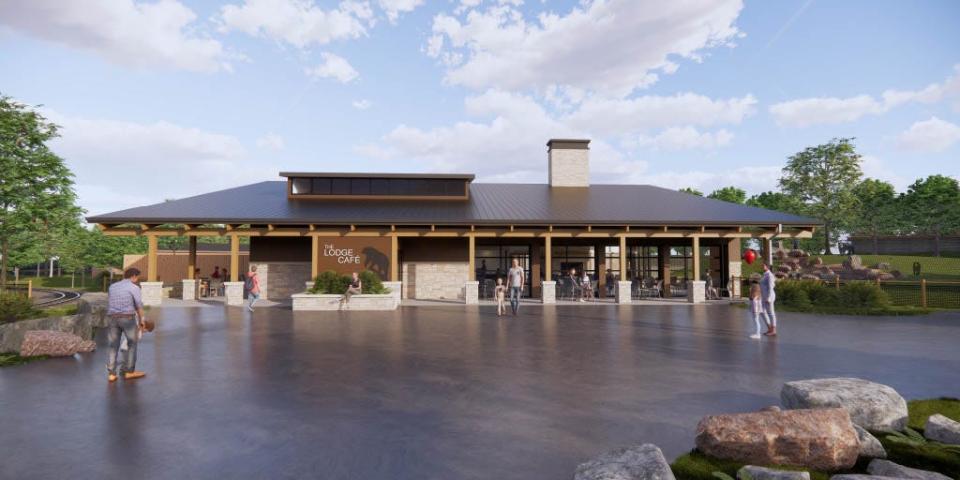Worth roaring about! New habitat for lions opens at Potawatomi Zoo

SOUTH BEND — After an absence of nearly 1½ years, lions returned to Potawatomi Zoo in late spring and have been getting used to their indoor home.
But on Thursday, the three 10-year-olds got to venture into a new open-air habitat on the east side of the zoo with the completion of the Wilma and Peter Veldman Lion Habitat.
And like all cats, it took a little coaxing from zookeepers, especially with thunder booming in the clouds above the zoo.
"Can you believe it's been a little over a year since we here having a major exhibit ribbon cutting for giraffes," said Josh Sisk, executive director of zoo, to a crowd that encircled the new habitat. "And here we are a year later doing a modern lion habitat."
More: Three South African lions arrive at Potawatomi Zoo in South Bend

“This is a wonderful gift to zoo patrons and the overall community,” said Sisk prior to the ribbon-cutting event. “The donation from the Veldman family helped us complete the funding for the $1.6 million project.”
Though they died several years ago, the Veldmans, who were, along with their son-in-law, founders of South Bend-based Tire Rack, continue to support community projects and non-profit agencies throughout the region through a family foundation.
"Wilma and Pete were always so focused on family," said Matt Edmonds, who was representing the Veldman, Joines and Edmonds families at the ceremony. So what better way to enhance the community than by helping with an exhibit that enhances the quality of life for families throughout the region, he said.
"With that, ladies and gentlemen, the roar is back in South Bend," Edmonds added before the lions were allowed to venture into the exhibit.

The new exhibit provides the type of naturalized habitat that is preferred by the Association of Zoos and Aquariums, offering a more enriching experience for the animals and zoo visitors alike.
The new lions ― Kembe and sisters Shaba and Shtuko ― were rescued as orphaned cubs and were living in South Africa before they were transported to South Bend.
The zoo’s last lion, Onyo, was euthanized in December 2021 at the age of 20 because of health and mobility issues. His brother Tango was euthanized a couple of years earlier for age-related problems.
More: Potawatomi Zoo lion, Tango, euthanized at 17

Sisk said the arrival of the new lions is an important milestone for the zoo.
“To the best of my knowledge, we’ve never had female lions at the zoo,” he said. “And I know it’s the first time we’ve had a breeding recommendation from the AZA.”
With a little bit of luck, the new lions might produce a litter of cubs, which would be a big hit at the zoo, which has gained a reputation ― especially in recent years ― of becoming a breeding zoo for Sichuan takins, Chacoan peccaries, three-banded Armadillos, sloths, red pandas and other animals.
More: South Bend's Potawatomi Zoo has banner year for babies
And similar to other babies that are born at the zoo, they would eventually be moved to other zoos around the country for future breeding and would be genetically valuable because their parents came from the wild, Sisk explained.
The new lion habitat follows the opening of the Laidig Giraffe Conservation Center in 2022 and the future unveiling of the Andean black bear exhibit and upscale concession lodge early next year or even late this year.
Market Basket: More than animals: Potawatomi Zoo takes aim at food to improve overall visitor experience

Still in the planning stages is a new habitat for the zoo’s tigers, which could become a reality in 2025, Sisk said, adding that the zoo has proven to be responsible custodians of the donations and public money it’s received.
Instead of building a new habitat for the lions from scratch, for example, the zoo made use of what was already there from the old chimpanzee exhibit to save at least $2 million while providing the public with a new habitat for the lions.
“Our patrons and the public should be proud of how we’re getting away from cages and able to build state-of-the-art habitats, offering an attraction the region can be proud of,” Sisk said. "It's just unbelievable the revitalization that's been happening here at the zoo."
Because the zoo is limited by its tight footprint, the former lions exhibit will be converted into a new habitat for mandrill baboons in the coming months.

With 316,000 visitors last year, the Potawatomi Zoo has truly become a regional destination, said Sisk. But with plans for additional attractions and upgrades, the zoo now has annual attendance of 400,000 in its sights.
The zoo is open seven days a week from 10 a.m. to 8 p.m. Admission is $12 for adults and $10 for those 62 and older or children ages 3 to 14.
Email Tribune staff writer Ed Semmler at esemmler@sbtinfo.com.
This article originally appeared on South Bend Tribune: South Bend has something to roar about with new lion habitat


